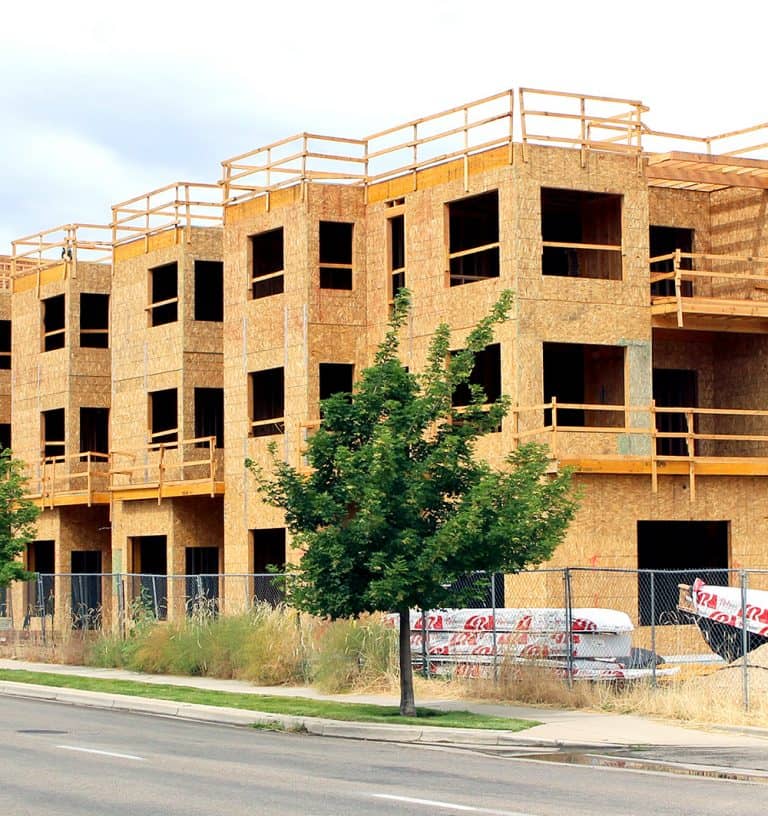
RedBuilt named a Gold Bicycle Friendly Business by the League of American Bicyclists
RedBuilt has earned recognition as a Gold Bicycle Friendly Business from the League of American Bicyclists!

It’s been said before and we’ll say it again: wood is good.
It’s a renewable, sustainable, and responsible resource.
Why should you prioritize carbon sequestration early in development?
A structure built with wood improves the impact on our climate and your business.
Think about it:
Implementing green building practices means using fewer resources, reducing waste, and decreasing life cycle costs. Sustainable design yields faster lease up rates, higher resale value, and lower energy use.
Carbon sequestration is the process of capturing carbon dioxide from the atmosphere and storing it. Wood is the only construction material capable of storing carbon, and it can be used in any structure. One cubic meter of wood traps about 1 ton of carbon dioxide.
For context, the EPA states an average car emits about 4.6 metric tons of CO2 in a year.
According to the American Wood Council, there’s about 50,000 cubic feet of new growth every minute in U.S. forests, and every minute on average over 24,000 cubic feet of wood is removed from those forests to build homes, furniture, and other products. Each year between 10 and 45 million tons of carbon dioxide are stored in new wood products.
The Forest Climate Working group estimates that the United States’ current inventory of wood structures stores approximately 5.4 billion tons of CO2. “Increasing wood use to the maximum extent feasible in multi-family housing, low-rise non-residential construction, and remodeling could result in a carbon benefit equal to about 21 million metric tons of CO2 annually—the equivalent of taking 4.4 million cars off the road indefinitely,” the American Wood Council states in a continuing education article.
WoodWorks provides a great carbon calculator that can give an approximation of the impact wood buildings have on the environment. The calculator is based on a substitution of wood products for non-wood products in a building.
For example, a new 53,000 square-foot California school we helped supply with Red-I™ Joists and RedLam™ Laminated Veneer Lumber included about 520 cubic meters (18,313 cubic feet) of wood products. According to WoodWorks, U.S. and Canadian forests grow this much wood in 2 minutes. There was approximately 410 metric tons of carbon stored in the wood, resulting in 870 metric tons of avoided greenhouse gas emissions.
Per their calculator, that’s equivalent to 244 cars off the road for a year and the energy required to operate 109 homes for a year.
Another recent project featured RedBuilt™ Open-Web Trusses, Red-I™ Joists, RedLam™ Laminated Veneer Lumber, and Glulam beams in a 35,000 square-foot office building with about 360 cubic meters (12,786 cubic feet) of wood products.
According to WoodWorks, that amount of wood is grown in 1 minute within U.S. and Canadian forests. About 290 metric tons of carbon dioxide was stored, and 610 metric tons of greenhouse gas emissions were avoided.
That’s equivalent to 173 cars off the road for a year and the energy to operate 77 homes for a year.
By making better use of every tree, RedBuilt produces cost-effective, consistently available engineered wood products that reduce environmental impact. Read more about our sustainability and green building solutions.